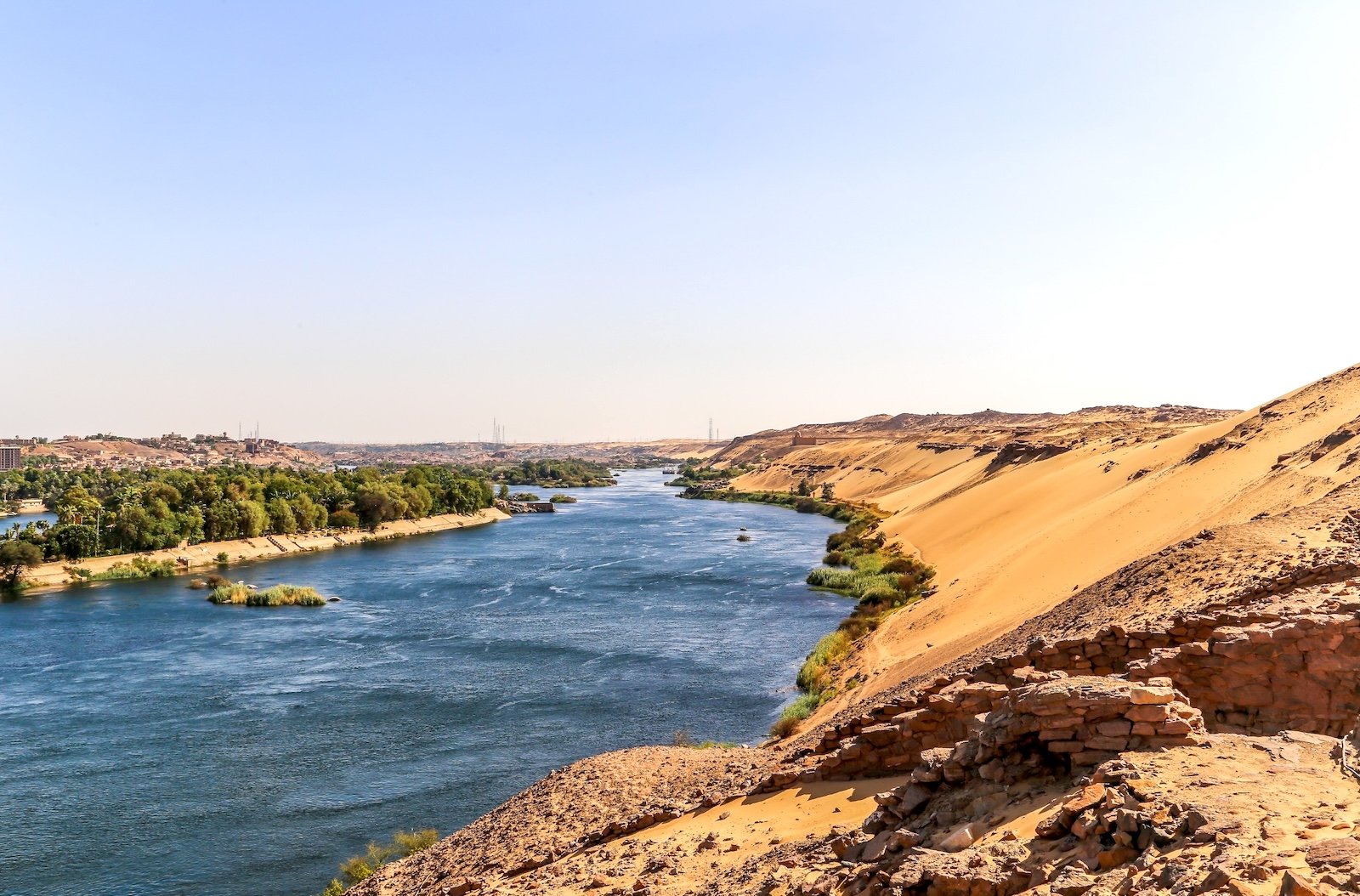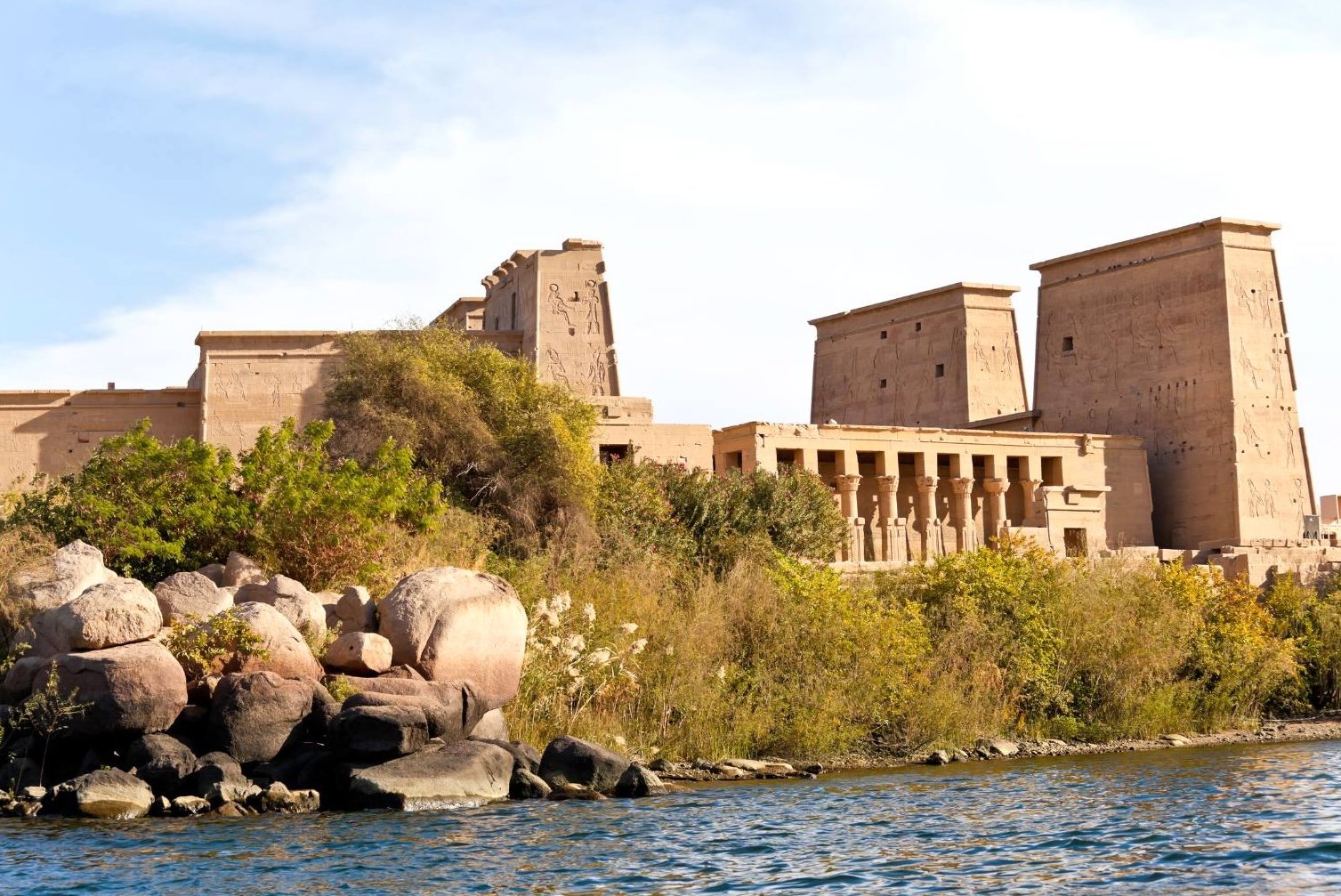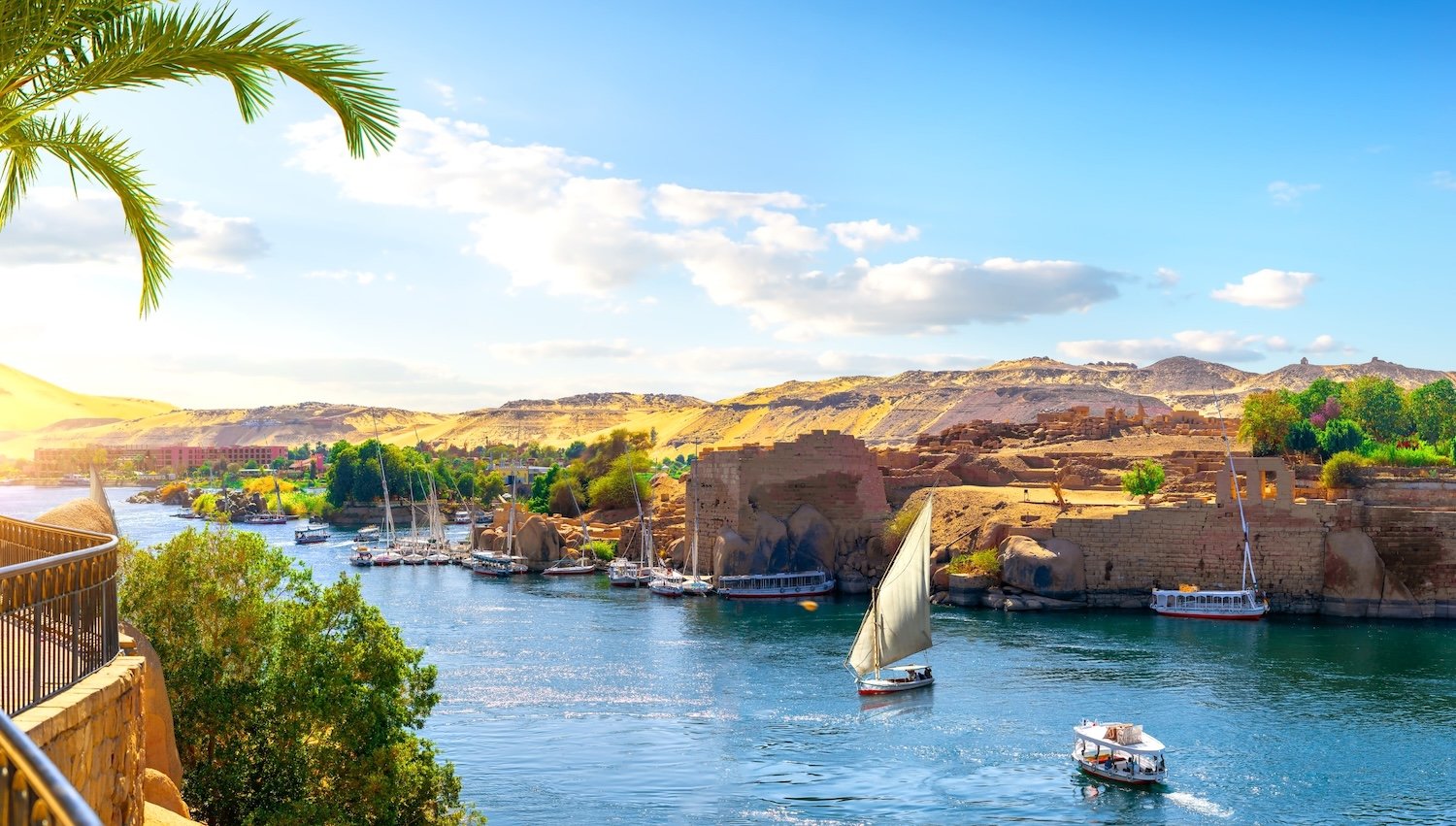The Nile River is one of those rivers that has played a significant role in human history. At over 6,600 kilometers long, the Nile flows through the heart of Africa and into the Mediterranean Sea. It served as a lifeline for civilizations for thousands of years. On its fertile banks, several ancient kingdoms rose and fell, magnificent temples stood, and trade routes were established.

Nowadays, exploring the history of the Nile is easier, thanks to the Nile Cruises in Egypt. As the cruise ship glides past timeless landscapes, you’ll see iconic archaeological sites and majestic temples, some built by pharaohs who were captivated by the river’s charm.
Booking Nile Cruises (book your trip now from here) means getting treated to a front-row seat to one of the world’s greatest historical journeys.
The Nile in Ancient Egypt
The Nile was the heart of ancient Egypt. It has given life to this ancient land for so many years. Every year, as the river floods, it leaves rich soil along the banks. As a result, farmers grew wheat, barley, and vegetables along the banks.
The Nile River was also considered an important trading route. Boats have carried goods and people up and down it for centuries. Villages and cities have also been established along the Nile. The river gave food and water, and allowed people to make a living through trading. Without the Nile, Egypt would have been a desert. Indeed, the Nile has helped shape the people’s lives, their beliefs, and their gods.
Iconic Historical Sites Along the Nile.
During your Nile River Cruise in Egypt, you will find these historical sites as your ship travels through the river.
1- The Pyramids of Giza.
The pyramids are among Egypt’s most-visited tourist attractions. These pyramids were built around 4,500 years ago and are a fascinating symbol of ancient power and engineering.
2- Karnak Temple.
In Luxor, you will find the Karnak Temple, which you can catch a glimpse of during your Nile Cruise. The temple sits in a vast complex, and it is dedicated to the god Amun. The walls and towering columns of the Karnak Temple tell interesting stories of the kingdom that shaped Egypt.
3- Luxor Temple
The Luxor Temple is also located in Luxor. It’s one of the most gorgeous sites you will see during your cruise of the Nile, especially at night when it is beautifully lit. The temple served as a place of worship for many years, dating back to the pharaohs and the Romans.
4- Valley of the Kings.
Located across the Nile from Luxor, the Valley of the Kings is where pharaohs were buried. You will find the tomb of Tutankhamun here, which houses many interesting treasures.
5- Abu Simbel.
In the southern part of the river, you will find Abu Simbel. These are massive rock temples constructed by Ramses II. Some of the giant statues towering at the entrance are over 20 meters tall!
6- Philae Temple.
This temple is located near Aswan and is dedicated to the goddess Isis. To save it from flooding during the construction of the Aswan High Dam, the temple was moved to an island.

The Nile’s Role Through the Ages.
The Nile has been more than just a river. During ancient times, it served as Egypt’s source of life. The river helped feed the fields and even linked distant towns. During the Greek and Roman periods, the river was used to transport goods and allow the exchange of ideas and cultures up and down its waters.
Around the Middle Ages, the river remained a vital trade route. It connects Africa to the Mediterranean world. Even in today’s modern times, the Nile still plays a significant role. It supports farming, fishing, and transport for millions of people. Through every age, the river has served as a thread linking the past to the present, and has helped shape the land and the people who depend on it.
Myths, Legends, and Cultural Heritage.
For thousands of years, the Nile River has been an inspiration for many stories and beliefs. During ancient times, it was seen as a gift from the gods. People believed the yearly floods were blessings from Hapi, the god of the Nile. Some Myths also tell about the river as coming from the heavens and serving as a link between the earth to the divine. Temples, festivals, and songs celebrated its life-giving waters.
Along the river banks, traditions were passed down through many generations, including farming methods and folk tales. The river became part of the daily life of so many people, shaping the culture, art, music, and rituals. Even today, the Nile is a source of pride and identity, woven deeply into Egypt’s cultural heritage, and you will experience this during your Nile Cruise in Egypt.
Experiencing History on a Nile River Cruise
A Nile River Cruise is one of the most fascinating experiences you’ll ever have on your trip to Egypt. Cruising the river is like traveling into a moving time capsule. From the ship’s deck, you can watch ancient archaeological sites, golden fields, palm groves, and ancient temples. This brings you closer to Egypt’s storied past, from the grand columns of Karnak to the royal tombs in the Valley of the Kings.
A Nile River cruise is more about discovery. If you consider yourself a history enthusiast, this is an activity you should not miss. The best part? You will have a relaxing time on board and can even see the beauty of the river from your cabin. Not only that, but you also get to sample local Egyptian cuisine. The Nile River Cruise packages also include shore excursions, where you visit those sites that have stood for thousands of years, a truly fascinating experience!

FAQs
What are the historical sites that I can see during a Nile River Cruise?
The Nile Cruises will stop at some of the most famous ancient landmarks in Egypt. Among the most famous ones are the Karnak and Luxor temples, the Valley of the Kings, Philae Temple, and even Abu Simbel. Take note that the sites you will see will depend on the cruise. When booking Nile Cruises in Egypt, you will find information on what sites you will see during the journey.
Do Nile River Cruises include guided tours?
Yes, most of the Nile Cruise packages have guided tours as part of the entire package. These tours will take you to the historic landmarks along the Nile. You will be with a licensed guide, usually a professional Egyptologist, who is knowledgeable about Egypt’s history, architecture, and culture. The guide can help bring the ancient world to life and will make sure you don’t miss important details during your tour.
How far in advance should I book Nile Cruises?
You should book Nile Cruises at least 3 to 6 months earlier than your actual trip. This is especially true if you plan to cruise during the peak travel season in Egypt, which is from October to April. During this time, the demand for Nile Cruises in Egypt is usually high, and cruises can get fully booked easily.
Trusted Partners
Nile Cruisen: Chosen by Leading Brands as Egypt's Top Cruise Operator











